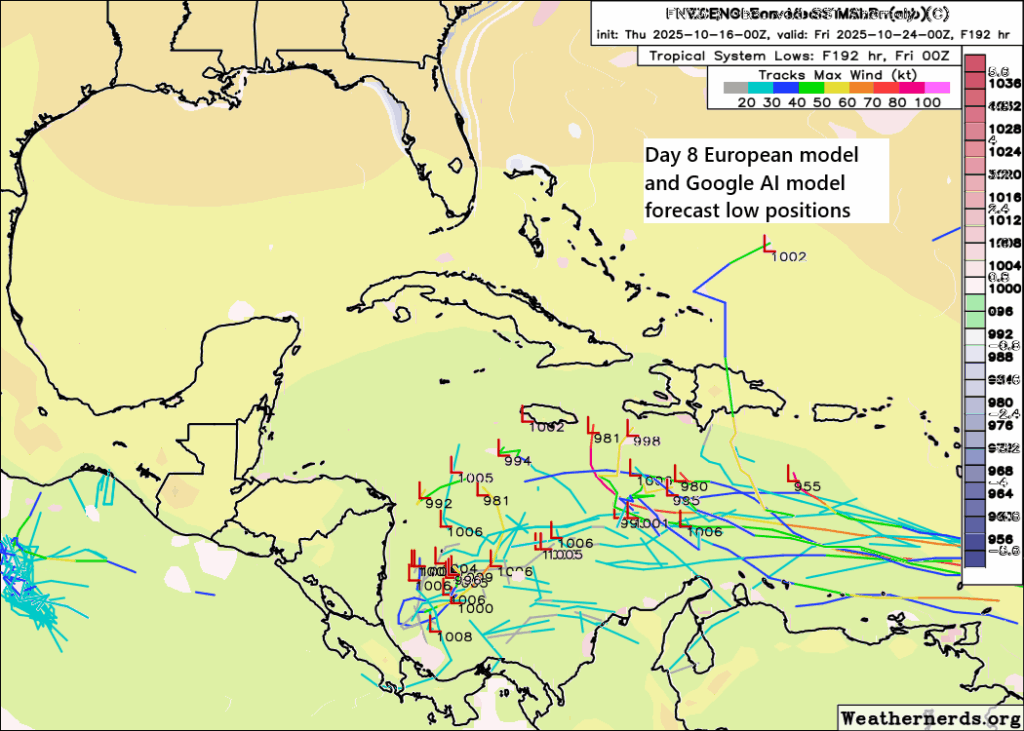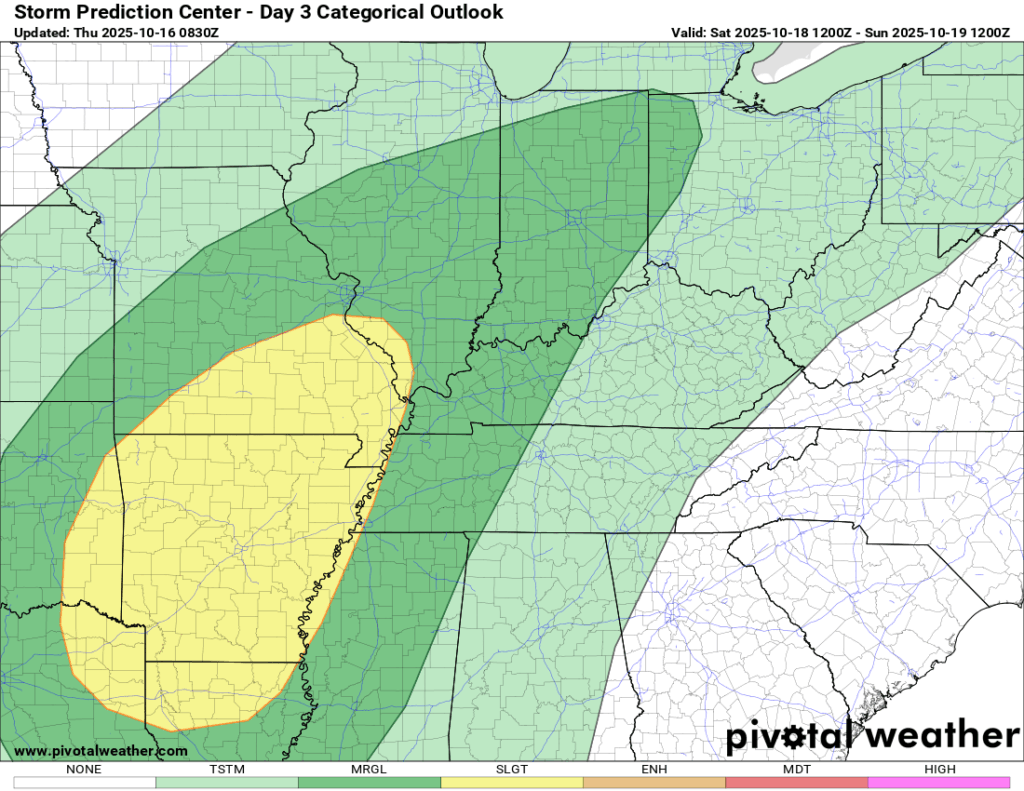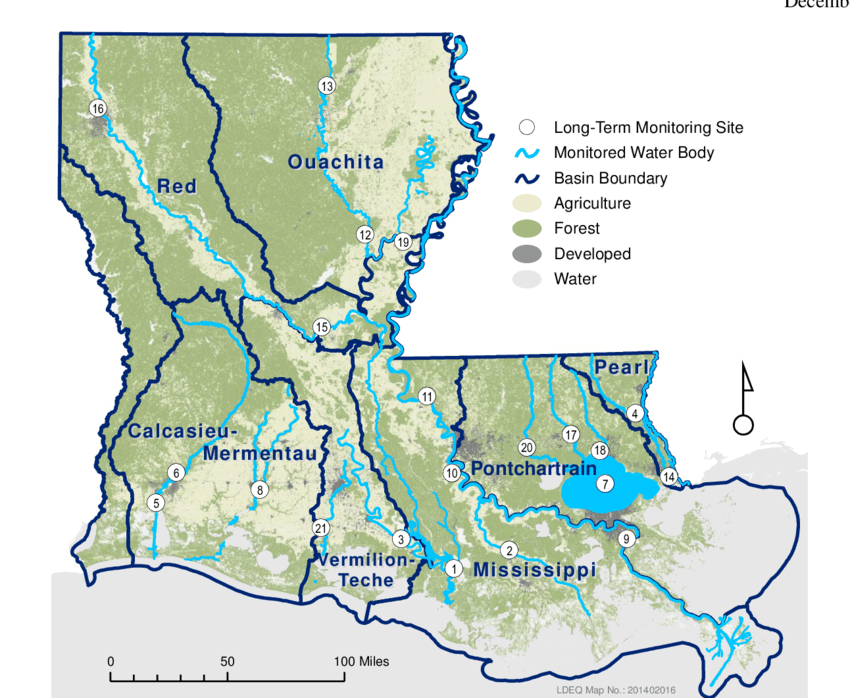In brief: Today we take a fresh look at the chances of Caribbean development next week. A lot of newsy stuff at the bottom today, including some discourse on how a lack of weather balloons may have impacted the storm forecast in Alaska this past weekend. Plus some good news and bad news as it relates to fallout from July’s devastating, tragic flooding in Texas.
Caribbean risks remain non-zero but still somewhat low
With the tropics now quiet, we can focus entirely on rampant speculation, which is to say the Caribbean. Let’s go way out to day 8, which is next Thursday evening.

Forgive the somewhat sloppy formatting, but I combined both the Euro ensemble and Google AI ensemble modeling on one map here. You can see that a minority of ensemble members support development in the Caribbean, and exactly where and how strong they get with it is also in question. What you’d typically see in this sort of pattern, I think, is that we’d have disorganized thunderstorms basically “fester” in this area for several days, and eventually they could congeal into a system that is slow moving in the southwest Caribbean. From there, it could drift inland into Central America and fizzle out, or it could come north or northeast. A lot of options are on the table. It could develop significantly or it could just be plagued by other issues to hamper its organization. Whatever the case, it’s something to watch but it remains mostly speculative at this point, without any real concrete risks to explain. We’ll follow along.
Newsy Bits
Our first real severe weather event of autumn may descend this weekend. Rather than reinvent the wheel, I will direct you to Alan Gerard’s writeup on this in his Balanced Weather Substack this morning. Fall often brings severe weather, especially to the Mid-South and Deep South, so it’s that time of year to begin paying attention.

Alaska: Recovery and weather balloons
Recovery continues after this weekend’s horrific storm in western Alaska. There are still two missing and one person that was killed from the village of Kwigillingok. Schools are still being used as shelters as the recovery period begins. Thinking about recovery in rural, remote western Alaska, you have to reset your mind a bit. This isn’t going to be like a recovery virtually anywhere in the Lower 48. Life is challenging on a good day in some parts of Alaska, and this is the sort of recovery that is a logistical challenge. I strongly encourage you to read Rick Thoman’s piece linked there.
One thing we have discussed at times since spring is that the degradation in consistent weather balloon launches was not a question of “if” but “when” it would come back to bite us. While we were fortunate (to this point) to not see a hurricane in the Gulf, which particularly concerned me as the scenario we’d get burned on, it is entirely plausible, if not likely that the forecast for Halong’s impacts in Alaska was negatively impacted by a substantial loss of upper air data. As Rick points out, the storm deviated from model forecast tracks and sped up. Would upper air balloon data from St. Paul Island for example have helped better forecast the directness of the impacts? We need experiments to prove it, but circumstantially this is almost exactly what we would have expected to see with a lack of consistent upper air weather data. This is why a strong, fully funded and fully staffed National Weather Service is important. We currently do not have that.
Louisiana: Flood mitigation plans should be regional
An interesting article out of Acadiana, where a local congressman is annoyed that the Army Corps has not started a dredging project that he fought for and has been approved. The purpose is flood mitigation, but the reality is that dredging is one small piece of a very complicated pie. What I like about this article is that it focuses on the fact that a regional approach to flooding issues is becoming a requirement in a heavily developed society dealing with more frequent flooding events. The congressman seems to be riding more of an ideological wave here with his ire, but it does underscore that these projects sometimes take seemingly too long to come to fruition.

Mississippi coast: The cost of home ownership due to disasters
Mississippi Today has a deep dive on the insurance challenges and costs of home ownership near the Mississippi coast. While there have been tremendous strides in the wake of Hurricane Katrina 20 years ago, the vulnerability remains extreme. Large carriers like Allstate and Progressive have stopped writing wind policies there. And there’s now a vicious cycle where people cannot afford repairs and upgrades to help make their properties more resilient to storms, while their premiums keep rising, and the state’s lax approach to any new regulation hangs over it all.
Texas: Further investigating this summer’s flood tragedy
Some encouraging news in Texas. The summer special session of the Texas Legislature was completely overshadowed by the redistricting situation, but there were some notable, good elements related to this past summer’s flooding tragedy that came from it. Is it enough? No. But there will be more discussion and testimony on the event and trying to piece together more about what went wrong. The state is convening what they are calling the Senate and House General Investigating Committees on the July 2025 Flooding Events. This will be a joint panel on digging into what happened that will probably be able to move more slowly and with more detail than was allotted this past summer. Presumably, additional recommendations and guidance will be implemented as a result of what they uncover. Overall, I call it encouraging because it would be easy to say “We did something” after this summer’s session and move on. This suggests that there is more to come, and that’s a good thing.
Texas: Questions about FEMA eligibility
Some discouraging news in Texas from Emily Foxhall of the Texas Tribune. Only about 20 percent of all FEMA disaster applicant requests from Kerr County have been deemed eligible since the July 4th floods. Sarah Lebowitz who researches disaster for the Carnegie Endowment found that between 2015 and 2024, about 40 percent of FEMA applications are deemed eligible. 54 percent of applications from Kerr County haven’t even been reviewed beyond the initial stage. The Texas Tribune also found that the rate in Kerr County is well under the rates of other affected counties in Texas that are dealing with similar processes in working FEMA’s system. One reason they speculate on may be that people are struggling to work an online system in an area with spotty internet that’s still disaster ravaged. FEMA isn’t sending people door to door to help victims work through the system and process as they have in the past. This is likely due to budget cuts enacted under the current administration. The current shutdown is likely not helping matters.
Whatever the exact explanation, the story is worth your time to understand how nonprofits are helping fill (some) of the gaps. They can’t do it all however, and the process of navigating a post-disaster landscape can be maddening and full of additional hardship, particularly for people who lost everything and/or friends and family during the flood.